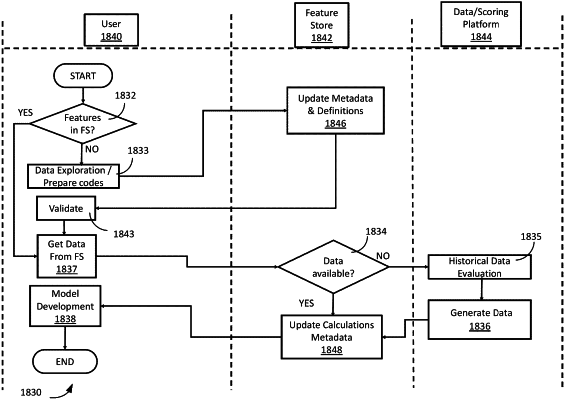| CPC G06N 20/00 (2019.01) | 30 Claims |

|
1. A computer-program product tangibly embodied in a non-transitory machine-readable storage medium, the computer-program product including system instructions operable to cause a computing system to:
generate a graphical user interface comprising user-interpretable descriptions of multiple preconfigured feature sets;
obtain, at the computing system, a first preconfigured feature set comprising one or more feature definitions by receiving user input at the graphical user interface, wherein the first preconfigured feature set defines:
a first feature definition defining an input variable extracted by feature engineering for developing an analytical model; and
first computer instructions for locating first data, wherein the first data is associated with the input variable for developing the analytical model, and wherein the first data is available for retrieval because it is stored, or set-up to arrive, in feature storage according to the first preconfigured feature set;
receive, at the computing system, a request for a data set for the input variable for developing the analytical model;
determine, by the computing system, that the data set is unavailable for retrieval according to the first preconfigured feature set;
responsive to determining that the data set is unavailable for retrieval according to the first preconfigured feature set, generate, by the computing system, the data set by:
retrieving historical data for the first preconfigured feature set;
retrieving a data definition associated with the historical data; and
generating the data set based on the historical data and the data definition; and
control, by the computing system, development of the analytical model based on the data set, wherein to control the development of the analytical model, the system instructions are operable to cause the computing system to generate the analytical model based on the data set.
|